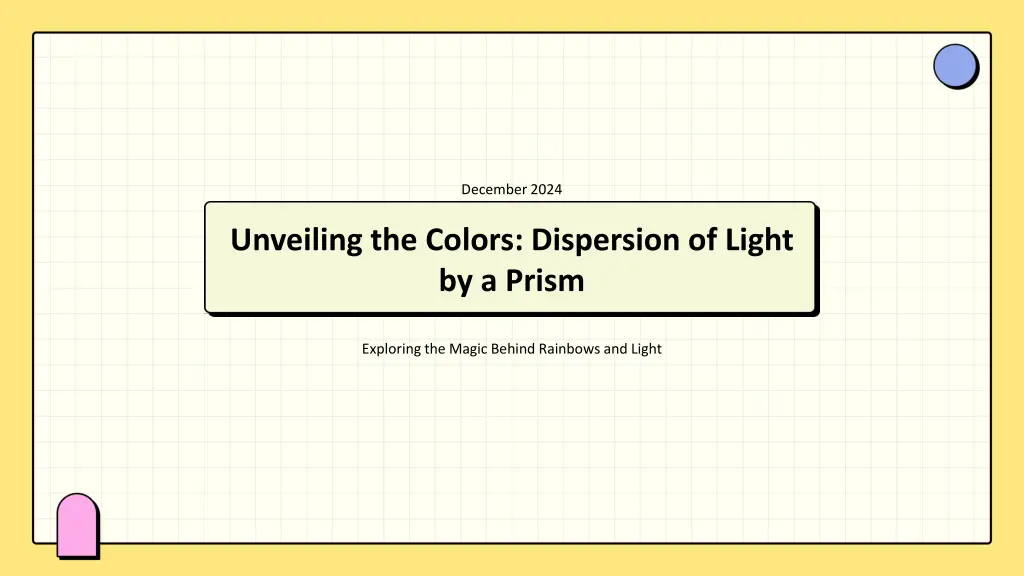
Unveiling the Magic of Light Dispersion and Rainbows
Explore the fascinating world of light dispersion through prisms, rainbows, and Newton's experiments. Discover how white light splits into colors, the mechanisms behind dispersion, and the formation of rainbows in the sky. Learn about the significance of Isaac Newton's work, the applications of dispersion in various fields, and how this natural phenomenon continues to inspire scientific inquiry and creativity.
Download Presentation

Please find below an Image/Link to download the presentation.
The content on the website is provided AS IS for your information and personal use only. It may not be sold, licensed, or shared on other websites without obtaining consent from the author. If you encounter any issues during the download, it is possible that the publisher has removed the file from their server.
You are allowed to download the files provided on this website for personal or commercial use, subject to the condition that they are used lawfully. All files are the property of their respective owners.
The content on the website is provided AS IS for your information and personal use only. It may not be sold, licensed, or shared on other websites without obtaining consent from the author.
E N D
Presentation Transcript
December 2024 Unveiling the Colors: Dispersion of Light by a Prism Exploring the Magic Behind Rainbows and Light
Table of Contents 5 Conclusion and Applications 1 Introduction to Light Dispersion 2 Mechanism of Dispersion Formation of Rainbows 3 Newton's Experiment 4
Introduction to Light Dispersion 1. The splitting of white light into its constituent colors when passing through a transparent medium like a prism. 2. Understanding dispersion helps explain natural phenomena like rainbows and the behavior of light. 3. Isaac Newton's experiments laid the foundation for understanding light dispersion. 4. White light consists of all visible colors, which separate during dispersion. 5. Used in optics, photography, and understanding atmospheric phenomena.
Mechanism of Dispersion 1. A prism refracts light, causing different colors to bend at different angles. 2. Different colors travel at different speeds through glass, leading to dispersion. 3. The angle of refraction varies for each color, causing separation. 4. Passing dispersed light through a second prism can recombine it into white light. 5. Using diagrams and experiments to see how light splits.
Formation of Rainbows 1. A natural spectrum of light appearing in the sky, caused by dispersion. 2. Water droplets act like prisms, dispersing sunlight to form rainbows. 3. Light reflects inside droplets, enhancing the dispersion effect. 4. Occur when light reflects twice inside droplets, creating a secondary rainbow. 5. Rainbows have been symbols of hope and promise in various cultures.
Newton's Experiment 1. Isaac Newton demonstrated that white light is composed of different colors. 2. Showed that dispersed light can be recombined into white light. 3. Newton's work paved the way for modern optics and color theory. 4. Newton faced skepticism but his experiments were eventually accepted. 5. Continues to influence scientific thought and education today.
Conclusion and Applications 1. Recap of how dispersion works and its significance. 2. Use of dispersion in technology, art, and science. 3. Teaching dispersion helps students understand fundamental physics. 4. Ongoing research into light behavior and new technologies. 5. How natural phenomena like rainbows inspire scientific inquiry.
